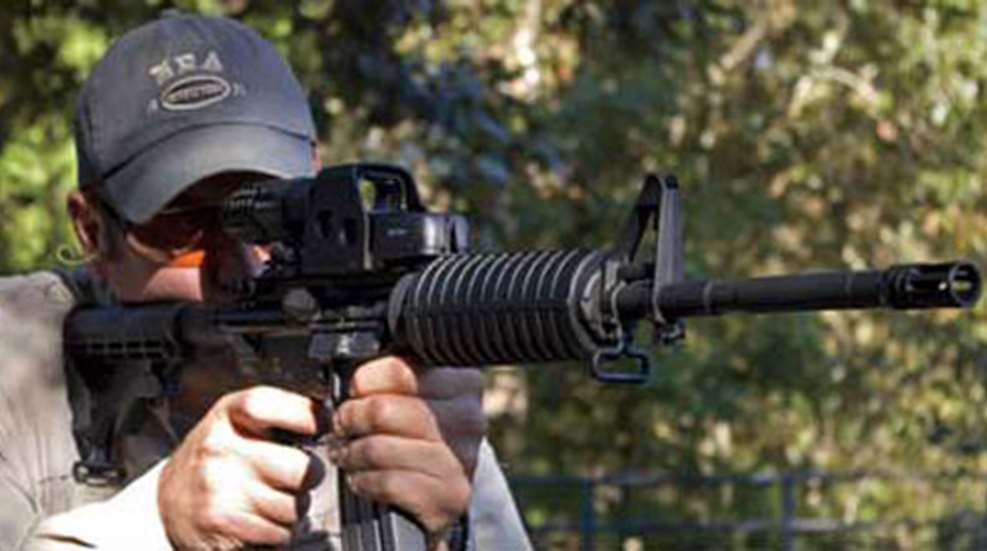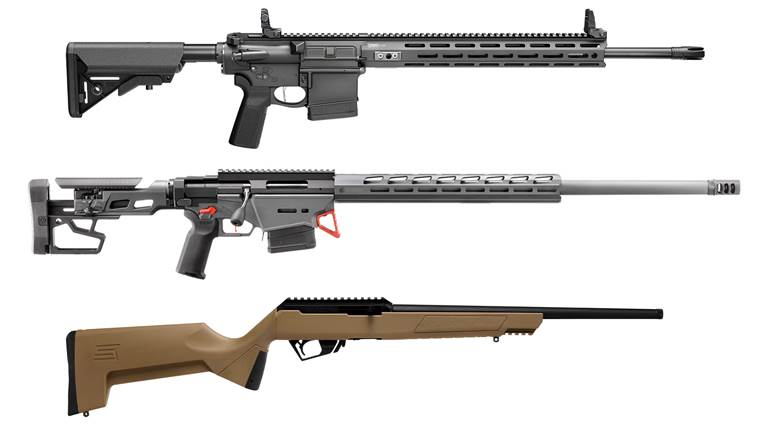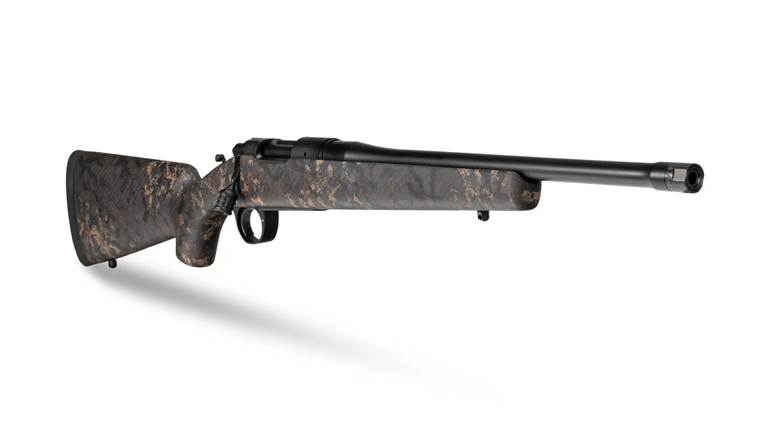
With a history dating back to the late 19th century, Charles Daly is a name renowned in the sporting firearm community. Branching out into a new category, the company recently launched a division called Charles Daly Defense and is offering the CDD-15 series of AR-pattern rifles.
While AR-pattern rifles might seem an odd fit for a company best known for shotguns, Charles Daly Defense set about from the beginning to develop rifles that exhibit the qualities and features that knowledgeable enthusiasts demand. In particular, the D-M4LE is intended as a fully upgraded M4 Carbine-style semi-automatic rifle with a host of “mil-spec” features and details.
The core of the rifle is made from 7075-T6 aluminum forgings that are machined and then hard-coat anodized and Teflon-coated.
The D-M4LE sports a 4150 chrome-moly vanadium barrel with a 5.56x45 mm NATO chamber. As compared to the more common 4140 steel barrel material, 4150 steel has greater theoretical strength at extreme temperatures and stresses. Another area where the D-M4LE’s barrel stands out is in its rate of twist. Whereas a 1:9-inch twist is more common, the D-M4LE features a faster 1:7-inch rate of twist that can stabilize a broader range of bullet weights. The barrel’s contour features the now-familiar M203 step and is topped off with an A2-style muzzle brake. The barrel, in addition to all the other steel parts of the carbine, features an evenly applied manganese phosphated gray/black finish.
To ensure reliable feeding of cartridges, the D-M4LE has what has become generally known as M4 feed ramps. Specifically, this is a set of feed ramps cut into the rear face of the barrel extension that mate with corresponding cuts-outs in the area of the receiver beneath the barrel extension.
The upper receiver is a flat-top with an integral Picatinny rail numbered to aid repeatable placement of accessories and optics. Although the flat-top upper of the carbine makes it ready to accept an optic, Charles Daly Defense thoughtfully includes an A3-style detachable carry handle as well. In fact, with the carry handle attached, the D-M4LE at first glance appears to be a pretty much standard M4 Carbine-style firearm. The black synthetic stock is a six-position collapsible unit embossed with the CD (Charles Daly) logo. The black synthetic pistol grip is of the A2-style, and the front end of the carbine features a set of black-oval, double heat shield M4-style fore-ends. The red witness mark on the right side of the lower receiver that visually indicates the safety’s status is a welcome feature.
There are also internal improvements not visible at first glance. The D-M4LE sports staking on two sections—the gas key on the bolt carrier and the castle nut on the receiver extension tube of the stock assembly. These two areas can be put under significant stress during extensive use and firing, and staking helps prevent them from working loose.
Another significant enhancement of the D-M4LE is its front sight base, specifically its height relative to the flat-top upper receiver. As compared to a standard A2-style front sight base dimensioned correctly for a fixed A2-style upper receiver, the D-M4LE features an “F”-marked front sight base that sports a 0.004-inch taller height more suited for a flat-top carbine. The front sight base features a bayonet lug and a rubber-coated sling swivel. Also of note is the fact that the D-M4LE employs a mil-spec dimensioned receiver extension tube rather than a commercial extension tube, with the proper H buffer assembly inside. Another tweak on the D-M4LE is in the magazine. Although the magazine is a standard aluminum-bodied 30-rounder, Charles Daly Defense equipped it with a Magpul synthetic self-leveling follower that is self-lubricating.
For testing, we equipped the rifle with an L-3 EOTech HWS 556.A65/1 holographic sight backed up by a 3X.FTS 3X magnifier unit on a flip-to-the-side mount with an A.R.M.S. throw-lever release. Over the course of several hundred rounds with three types of ammunition, we did not experience a single malfunction. The trigger broke at a somewhat heavy 7.8 pounds with some gritty take up, although this likely would break-in with use. Accuracy for the D-M4LE was quite good for a 16-inch-barreled carbine, and it showed a preference for the Black Hills ammunition.
Although it is not one of the lowest-priced M4 Carbine-style ARs, the D-M4LE’s attention to details such as fit, finish and quality, as well as Charles Daly Defense’s mil-spec approach to its design, make it worthy of serious consideration.
Manufacturer: Charles Daly Defense; (866) 325-9486
Caliber: 5.56x45 mm
Action Type: gas-operated, semi-automatic center-fire rifle
Receiver: 7075-T6 aluminum, forged
Barrel: 16", phosphated 4150 MIL-B-11595E CMV, chrome-lined
Rifling: six-groove, 1:7" RH twist
Magazine: detachable box, 30-round capacity
Sights: peep aperture rear, winged post front; flat top
Trigger: two-stage, 7 lbs., 8 ozs.
Stock: length of pull, 13 ¾" (stock extended); drop at heel, 1 ¾"; drop at comb, 1 ¾"
Overall Length: 32 ¼" to 35 ½" (stock collapsed and fully extended)
Weight: 6 lbs., 12 ozs.
Accessories: owner’s manual
Suggested Retail Price: $1,239





































